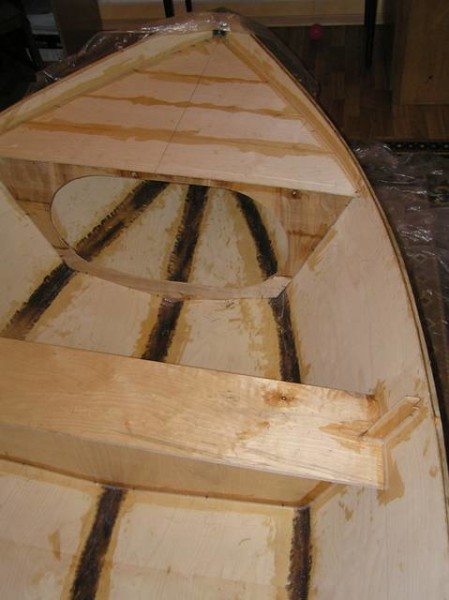All photos from the article
The modern market provides a fairly large selection of various tourist and fishing boats. But for our man, a homemade plywood boat is much closer. And the point here is not even about saving money, a do-it-yourself boat is a matter of pride, plus the whole process of self-production, this is not so much a job as an interesting hobby. In this article we will consider the main stages of the assembly of such products.
A few words about preparation
Homemade boats made of plywood and fiberglass are considered, albeit small, but full-fledged watercraft. Therefore, the process of preparation and assembly must be approached responsibly, because by and large, mistakes here can not only lead to damage to the vessel, but in some cases endanger the life and health of the owner.
What materials are needed
- As you can see from the name, the main material here is, of course, plywood.. For the hull of a small boat, sheets no lower than the first or second grade, about 5–7 mm thick, are well suited. For the keel, frames and other auxiliary structural parts, you need to take a thicker sheet, from 12 mm and above;
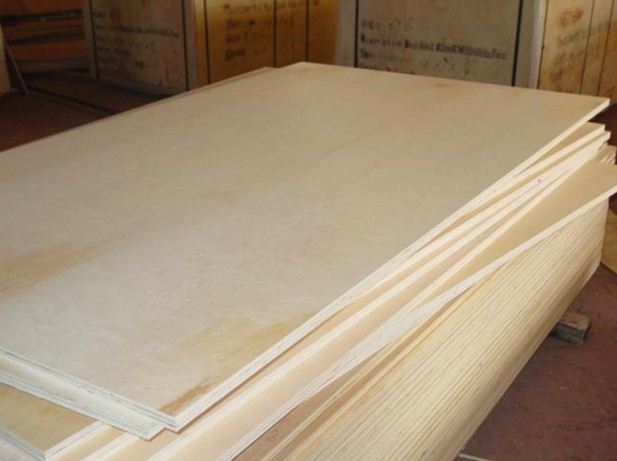
- Not the last thing is the brand of material. The choice of plywood is now quite large, but in this case the material will be in direct contact with fresh or even sea water for a long time, naturally, plywood must be taken with increased moisture resistance. Ideally, it is better to take the FB brand, it was originally made for ship needs. If the price of "FB" does not suit you, then you can stop at "FSF";
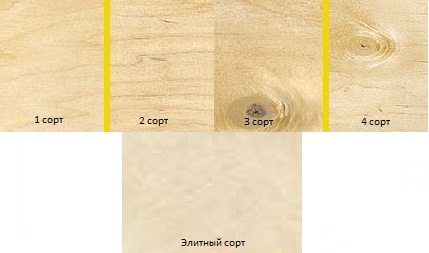
Tip: the now widespread brand "FC", in some sources it may be listed as waterproof.
But in our case, it is not suitable, here we need a material with increased moisture resistance, plus, able to withstand prolonged exposure to an aggressive environment.

- Clean wood will be used for struts, seats and other elements.. As a rule, a planed board with a thickness of 25 mm is taken here. In this case, preference should be given to soft, porous varieties. In professional shipbuilding, larch is used, but spruce or pine is enough for a small boat;
- Copper wire with a thickness of about 2 mm is well suited for intermediate stitching of sheets.;
- Glass fiber and polymer glue are used to arrange hermetic seams.. It is not difficult to choose the type of adhesive now, there is a fairly large selection on the market, the main thing is that the composition is waterproof.

Tool selection
Homemade plywood boats for fishing do not require an overly large set of tools.
Here you can get by with the traditional kit, which is available in the workshop of almost any owner:
- In addition to pliers, screwdrivers and scissors, you will naturally need a wood saw;
- Cutting plywood with an ordinary hand saw is quite difficult, so it is better to purchase with a set of blades. Moreover, you should select a model with as many revolutions as possible, since at low revolutions the veneer will break off along the edge;

- For such work, a grinding machine is required. With ordinary emery, manually, you will not be able to achieve good quality processing;
- To fix the sheets during gluing, clamps are used, there must be at least 3 - 4 pieces;
- A set of brushes is needed for applying glue and paints and varnishes.
boat building
In this case, it is not so important which type of boat you choose. Punts, kayaks, sailboats or boats with a motor, the instructions for building all these models are approximately the same.
Starting with drawings
Now drawings of a homemade plywood boat are not a problem to find. In the network or specialized literature, this information is enough. You only need to decide on the size of the vessel, because the thickness of the sheets depends on it. If there is still no proper experience in such work, it is better to dwell on simple, non-separable models.
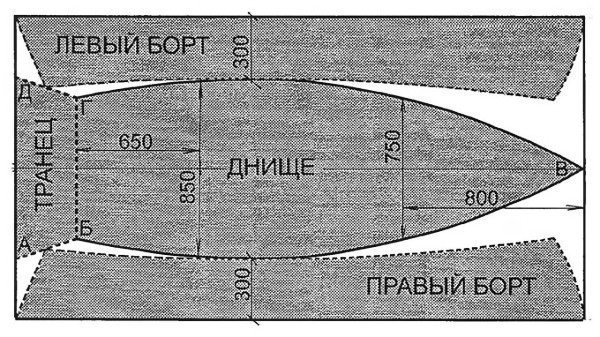
Experienced craftsmen do not recommend developing a boat on their own. But if you still decide on such a labor feat, you need to start with a careful calculation of the displacement and carrying capacity of the vessel. So that after you launch and try to swim, your product does not immediately go to the bottom along with the owner.
Important: drawings of home-made boats made of plywood for a motor are not much different from purely rowing counterparts.
As a rule, in these vessels the transom (tailgate) is slightly modified.
Therefore, regardless of whether you currently have a motor, it is better to immediately give preference to just such boats.
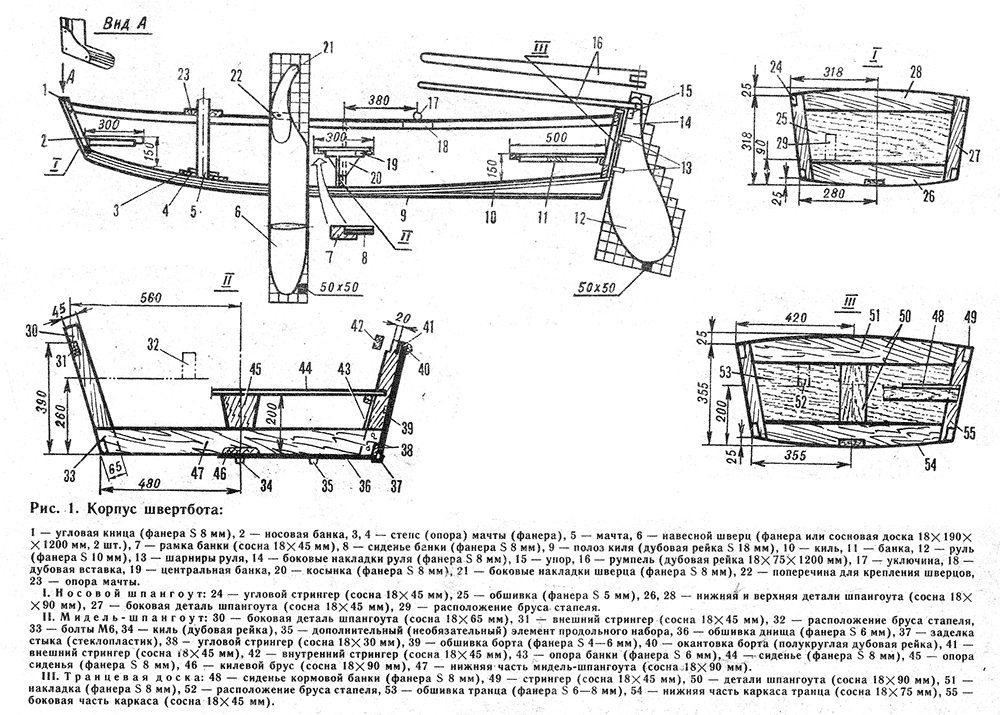
So, when you have found a model suitable for you, before proceeding to the direct manufacture of parts and assemblies, you need to make paper patterns according to the drawings. And only after controlling all sizes, transfer the pattern to plywood or wood.
Case assembly
The maximum length of a standard sheet is about 3 m. Therefore, in most cases, you will need to splice two or more small sheets into a single sheet. This is a simple, but rather painstaking process that requires precision and accuracy. Such a connection among professionals is called gluing on a mustache.
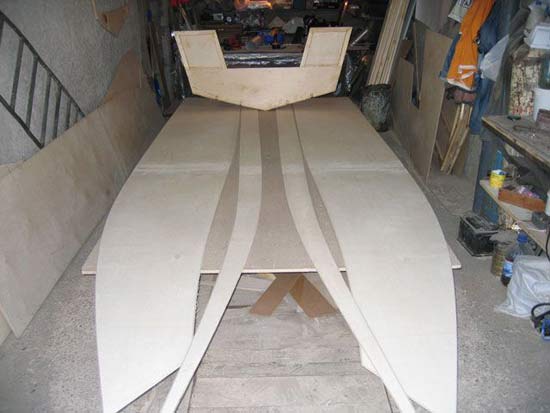
To do this, 2 sheets are taken and cut along the edge at an angle, the width of such a bevel must be at least 7 times the thickness of the sheet. The larger the contact area, the stronger the connection. The main mass is removed with a file, after which the machine until it is in perfect condition. Next, the bevels are smeared with glue, connected and pressed with something heavy, until completely dry.
Tip: it is extremely inconvenient to assemble and glue such structures on the floor, so it is advisable to immediately build goats from a wooden bar 50x50 mm.
Keep in mind that you will have to handle the boat on both sides, so the trestle will need to be adjusted for this.

Now you can move on to cutting out the components of our homemade boat for a motor from plywood and boards. The cut should ideally correspond to the markup, because at the slightest deviation, the sides will converge loosely, and it will be necessary to close the gaps.
Symmetrical details, for example, sides or frames, are more convenient to cut out in a single array. To do this, the sheets are folded, fixed with clamps and cut out according to the markup.
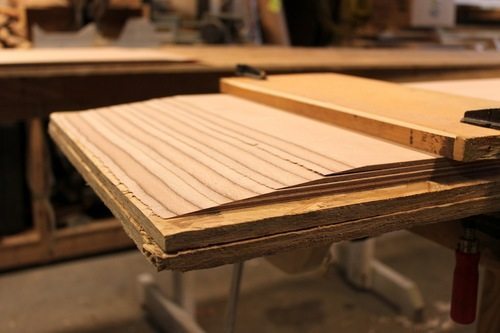
First, a transom is made, for models adapted to the motor, the transom must be reinforced. As a rule, it is made of several layers of plywood or durable wood. Plus, the transom is additionally glued with at least 3 layers of fiberglass.
The assembly starts from the transom. It is installed on the goats and from the back wall the sheets are sewn together. In the course of assembly, the edges of the sheets are ground at the right angle for closer contact.
The sheets are pulled together with copper wire in increments of 50 - 150 mm. Holes for the wire are drilled along the diameter of the wire at a distance of at least 15 - 20 mm from the edge. After gluing the outside, the wire is pulled out.
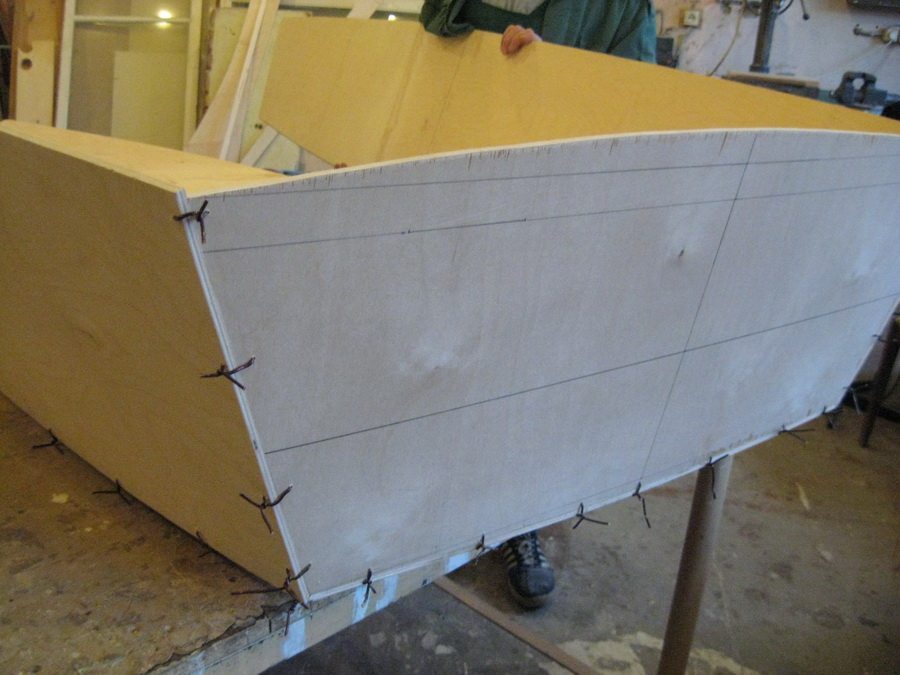
Seam gluing
When the body is sewn, all joints must be securely glued. For this, fiberglass or fiberglass will be used, which are abundantly lubricated with an adhesive.

As we have said, there are enough specialized resins in stores now, but most craftsmen prefer to use a mixture of epoxy and silicon dioxide, better known as aerosil. The proportion is taken 1:1. The instruction is simple, the joint is abundantly lubricated, after which a fiberglass tape is applied. And so at least 3 layers.
Tip: experienced craftsmen prefer to completely glue all surfaces of a plywood boat with fiberglass, both outside and inside.
This, of course, will require additional funds, but according to experts, such a boat will float for at least 30 years.
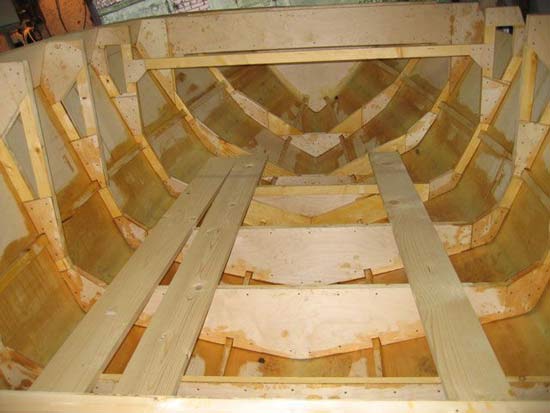
It is desirable to further strengthen all internal corners with wooden fillets, these are planks resembling a plinth in a house. Wooden fillets, frames, benches and all other parts are also glued with epoxy mixture and fiberglass, self-tapping screws and especially nails are not used here.
When the fiberglass shell hardens, all the irregularities are puttied, covered again with an epoxy mixture, and you can proceed to the final grinding. When the grinding is completed, the flooring, oarlocks, seats are installed and the repair bolt is screwed in.
After that, the finished boat is painted or varnished at least 3 times. Moreover, each subsequent layer is applied after the previous one has dried.
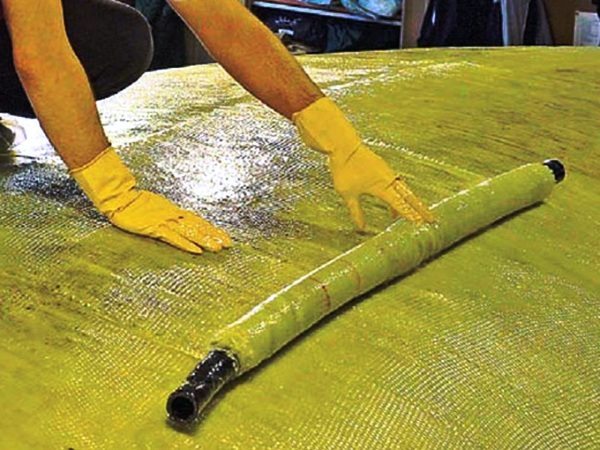
Conclusion
As you can see, everything is not so difficult, home-made plywood and fiberglass boats are quite reliable and durable designs. Confirmation of this can be considered thousands of homemade products plowing the rivers and lakes of our great motherland.
The video in this article shows one of the options for building such a vessel. If you have any questions, write in the comments, our experts will answer them.
